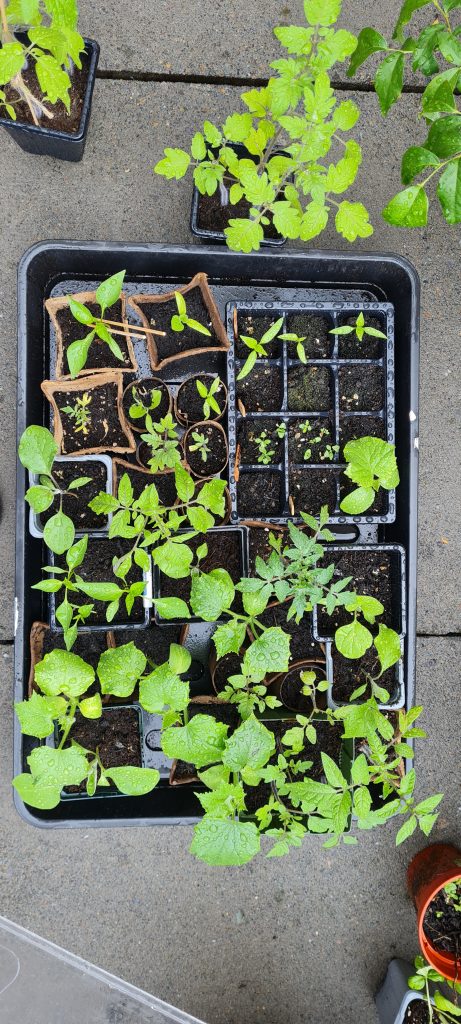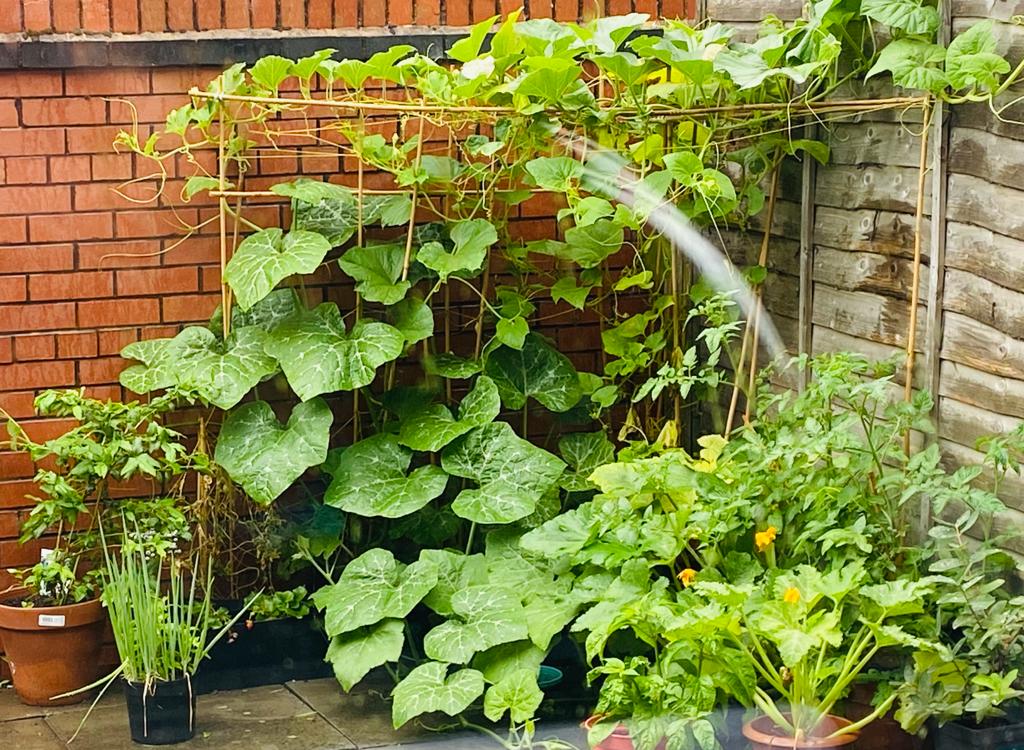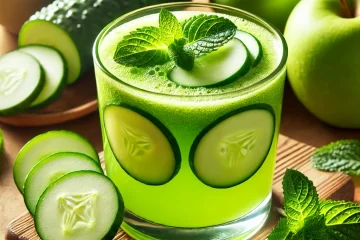Growing your own vegetables is a rewarding and fulfilling experience. Whether you have a spacious garden or a small patio, it’s possible to cultivate fresh, homegrown produce that tastes amazing. If you’re a beginner or looking for some tips to optimize your garden, here’s a detailed guide to help you get started.
How to Start Growing Vegetables for Beginners?
Starting a vegetable garden may seem daunting at first, but with a little planning, it can be easy and enjoyable. Here’s how to begin:
- Choose Your Space: Select an area in your garden that gets at least 6 hours of sunlight a day. For those with limited space, containers or pots can work just as well.
- Prepare the Soil: Healthy soil is the key to successful vegetable gardening. Loosen the soil with a fork, remove weeds, and mix in organic compost to enrich the earth with nutrients. Get good quality soil from Amazon
- Plan Your Layout: Decide which vegetables you want to grow, keeping in mind their size and growing conditions. Some veggies require more space than others. Start small with a few easy-to-grow plants and gradually expand as you gain confidence.
- Start with Seeds or Seedlings: Beginners can either buy small plants (seedlings) from a garden center or grow their own from seeds which you can get from Amazon direct to your door. If using seeds, follow the instructions on the packet for planting depth and spacing.
- Water and Care: Water your plants regularly, but avoid over-watering as this can lead to root rot. Mulching around your plants will help retain moisture in the soil and suppress weeds.

Is Growing Your Own Vegetables Cheaper?
In the long run, growing your own vegetables can definitely save money. The initial investment in tools, soil, seeds, or seedlings may seem costly, but once your garden is established, the costs reduce significantly. You’ll not only save on grocery bills, but you’ll also enjoy superior-tasting, pesticide-free produce.
Key factors that can make it cheaper:
- Home Composting: Making your own compost from kitchen scraps reduces the need to buy fertilisers. Get yourself a composter from Amazon it will save you money in the long run and you will have good quality soil.
- Reusing Seeds: Many vegetables produce seeds that can be saved and replanted for the next season.
- Low-cost Gardening Methods: Reusing containers, growing vertically, and using homemade organic pest control methods can keep costs low.
When Should I Start Growing My Own Vegetables?
The timing of when to start growing depends on your climate and the types of vegetables you’re planting. In the UK, spring is the best time to start sowing seeds outdoors.
What Is the Best Month to Start a Vegetable Garden?
In the UK, March to May is ideal for sowing most vegetables outdoors, as the risk of frost diminishes. However, some vegetables, such as spinach and lettuce, can be started earlier indoors or in a greenhouse.
Indoor Sowing:
If you want to get a head start, you can sow seeds indoors in pots or trays as early as January or February. This works well for plants like tomatoes and peppers, which need a longer growing season.
Seed Trays & Propagators from Amazon
What Is the Easiest Vegetable to Grow?
For beginners, starting with easy-to-grow vegetables is a great confidence booster. Some of the easiest vegetables to grow include:
- Radishes: Radishes are fast-growing and ready to harvest in as little as four weeks.
- Lettuce: Lettuce grows quickly and can be harvested throughout the season.
- Carrots: Once planted, carrots are relatively low-maintenance, and you can harvest them after a couple of months.
- Peas: They don’t require much space and can be grown vertically.
- Beetroot: Another hardy vegetable that grows well in most climates.
What Vegetables Should I Start First?
If you’re a beginner, focus on vegetables that are easy to manage and produce a high yield with little effort. Ideal starter vegetables include:
- Tomatoes: They grow well in pots and don’t need too much space.
- Beans: These are also easy to grow and can climb up a trellis or fence, making the most of small spaces.
- Zucchini (Courgettes): These are prolific growers and can provide a lot of produce from just one plant.
What Are the Easiest Vegetables to Grow in the UK?
The UK climate is ideal for many cool-weather crops. Here are some of the easiest vegetables to grow:
- Potatoes: Particularly easy to grow in the UK climate and can even be grown in bags.
- Runner Beans: They thrive in the cooler British summers and produce plenty of beans over a long season.
- Spring Onions: They grow well even in cooler temperatures and can be harvested in a few months.
- Kale: A hardy vegetable that can withstand the unpredictable British weather.
What Is the Quickest Vegetable to Grow?
If you’re looking for fast results, the following vegetables are the quickest to grow:
- Radishes: These can be ready to harvest in just 4 weeks.
- Spinach: Within 30-40 days, you’ll have fresh leaves ready for picking.
- Lettuce: Baby lettuce leaves can be harvested in as little as 30 days.
- Turnips: Some varieties can be ready in around 40 days.
What Is the Most Difficult Vegetable to Grow?
Some vegetables require specific conditions and a lot of care, making them harder to grow. These include:
- Cauliflower: Sensitive to temperature fluctuations and pests, it needs consistent care to thrive.
- Celery: Celery has long growing periods and requires a lot of water and attention.
- Asparagus: Although rewarding, asparagus takes up to 2-3 years to fully mature before you can harvest.
- Artichokes: They need a warm, mild climate and can be tricky in colder areas.
Do I Need a Greenhouse to Grow Vegetables?
While a greenhouse is not essential, it can be beneficial, especially in the UK’s unpredictable climate. Greenhouses allow you to extend the growing season by starting seeds early in the year and protect delicate plants from frost and pests. If you’re planning to grow heat-loving vegetables like tomatoes, cucumbers, or peppers, a greenhouse will provide the ideal conditions for them.
That said, many vegetables can be grown outdoors or in containers without a greenhouse, especially if you choose varieties suited to your local climate.
Greenhouses of all sizes available on Amazon
What Vegetables Can You Grow in Pots?
For those with limited space or no garden, container gardening is a fantastic option. Many vegetables grow well in pots, provided they have enough space and proper drainage. Some ideal vegetables for pots include:
- Tomatoes: Perfect for pots, especially bush or dwarf varieties.
- Herbs: Basil, parsley, and mint thrive in small containers.
- Lettuce: Great for pots, especially if you grow ‘cut and come again’ varieties.
- Peppers: These can grow well in pots and produce plenty of fruit.
- Carrots: Choose a deep pot and smaller varieties like ‘Chantenay’ carrots.
- Chilies: These thrive in warm conditions and can be grown easily in containers on a sunny windowsill or patio.

Final Thoughts
Growing your own vegetables is not only cost-effective but also deeply satisfying. Whether you’re starting small with a few pots on a balcony or creating a full garden, it’s all about trial and error. Start with easy crops, learn from your experience, and soon you’ll be enjoying the fresh taste of homegrown vegetables. Plus, nothing beats the pride of harvesting produce that you’ve nurtured from seed to plate!



0 Comments